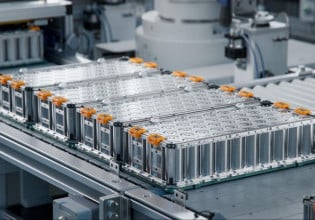Modernizing Models for Advanced Grid Technology
Experts say energy system models urgently need improvements to include emerging renewable energy technology and energy storage systems.
The composition of the modern grid is quickly shifting as emerging technologies, such as solar power and energy storage, are implemented on a larger scale.
Electric grid. Image used courtesy of State of Illinois
Robust energy system models play a critical role in shaping the future of electricity generation and distribution. While these models have traditionally focused on optimizing grid operations and planning, the dynamic nature of today’s grids, driven by technology advancements, calls for urgent updates to these models.
In a recent paper, experts from the U.S. Department of Energy’s Argonne National Laboratory and other institutions underscore the pressing need for improved energy system models.
These models, particularly capacity expansion models (CEMs), are instrumental in simulating future grids and identifying optimal investments over multi-year periods. Power plant operators, electrical engineers, and regulators rely on them for long-term grid planning and policy evaluation.
Decarbonization as a Driving Force
Government and corporate leaders have pledged to reach net-zero greenhouse gas emissions by 2050. This commitment aims to combat climate change, enhance air quality, and address various decarbonization objectives, including providing affordable and dependable energy.
While many of these targets encompass broad economy-wide decarbonization efforts, a particular focus has been on strategies to achieve net-zero emissions within the electricity sector.
Rapid adoption of wind and solar technologies and energy storage options has helped support these emissions targets. While energy storage fundamentally changes how grids operate, existing models fail to accurately represent their technical and economic characteristics. Yet policymakers increasingly rely on CEMs to steer their decisions and investments in decarbonization.
Characteristics of zero-carbon power systems. Image used courtesy of Nature Energy
Current models are inadequate for grids reliant on energy storage to accommodate fluctuating renewable energy resources.
These models fail to accurately depict energy storage's technical and economic attributes. The models overlook the interplay between storage systems and other grid elements, like wind and solar power facilities. Additionally, they inadequately factor in the inherent value of energy storage across a range of grid and electricity market applications. This limitation can have significant implications for ensuring grid stability and efficiency.
Effectively Modeling Energy Storage
With high expectations for electric grids, failure to accurately depict energy storage in CEMs could result in more costly or less dependable recommendations for decarbonization strategies. Energy storage technologies could efficiently and dependably incorporate increased amounts of renewable energy into the grid, all while supplying energy during unpredictable weather patterns.
Energy storage systems used with renewable energy. Image used courtesy of NREL
Recognizing the situation's urgency, a workshop organized by Argonne in late 2021 brought together modeling experts to identify research needs associated with applying CEMs to grid decarbonization. The insights gathered serve as a critical roadmap for enhancing models to meet the specific needs of power plant operators and electrical engineers.
Key challenges include accounting for state-of-charge management in batteries, capturing battery electrochemistry nuances, and considering supply chain challenges associated with manufacturing energy storage technologies. These considerations are vital for power plant operators and electrical engineers who must navigate the technical intricacies of the grid.
Other Challenges
Storage systems alternate between charging and discharging to meet diverse grid service demands, occasionally depleting their energy entirely. Having insight into the state of charge allows grid operators to ascertain whether storage systems possess sufficient power to respond promptly when wind and solar generation fall short of projections.
Additionally, most models overlook the intricate supply chain hurdles tied to producing energy storage technologies. Determining the optimal routes for decarbonization requires a comprehensive understanding of global battery supply chains. A modeler may have to limit the use of a given technology due to the volatility in the supply chain.
Opportunity for Advancements
The call for better energy system models is relevant to sustainability and climate change and important to power plant operators, electrical engineers, and those responsible for ensuring grid reliability and affordability.
As technology continues to reshape the energy landscape, robust models that accurately represent grid dynamics become indispensable tools for those shaping the future of electricity generation and distribution.









